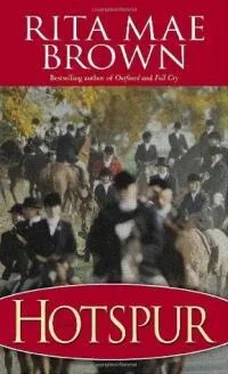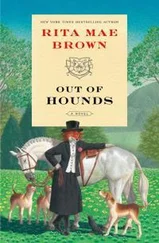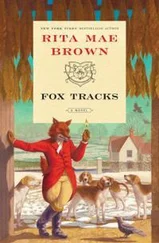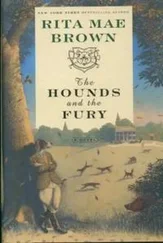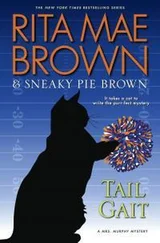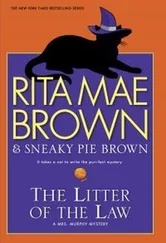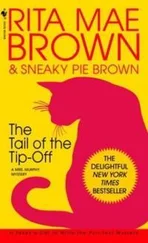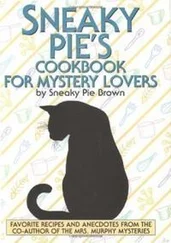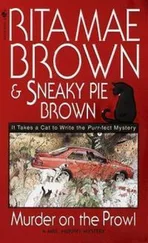“Well, it’s over and we have to get on with our lives. I’d give anything to have Guy back, but what I do have is memories, and maybe a new way of looking at things. I intend to honor my son, not mourn him.”
“Well said.” Tedi felt the same way about her daughter.
“You know what I think? I’ve probably known it in the back of my mind, but not so I could say it.” Sister gazed in wonder at tiny dancing particles suspended in a ray of light. “To wantonly destroy life is a sin, a stain, an affront to every one of us. I believe, with my heart and soul, that all life is sacred. That, it seems to me, is a truth that would shame any devil.”
SOME USEFUL TERMS
AWAY—A fox has “gone away” when he has left the covert. Hounds are “away” when they have left the covert on the line of the fox.
BRUSH—The fox’s tail.
BURNING SCENT—Scent so strong or hot that hounds pursue the line without hesitation.
BYE DAY—A day not regularly on the fixture card.
CAP—The fee nonmembers pay to a hunt for that day’s sport.
CARRY A GOOD HEAD—When hounds run well together to a good scent, a scent spread wide enough for the whole pack to feel it.
CARRY A LINE—When hounds follow the scent. This is also called “working a line.”
CAST—Hounds spread out in search of scent. They may cast themselves or be cast by the huntsman.
CHARLIE—A term for a fox. A fox may also be called Reynard.
CHECK—When hounds lose the scent and stop. The field must wait quietly while the hounds search for scent.
COLORS—A distinguishing color—usually worn on the collar but sometimes on the facings of a coat—that identifies a hunt. Colors can be awarded only by the master and can be won only in the field.
COUPLE STRAPS—Two-strap hound collars connected by a swivel link. Some members of staff will carry these on the right rear of the saddle. Since the Middle Ages hounds had been brought to the meets coupled. Hounds are always spoken of, counted, in couples. Today hounds walk or are driven to the meets. Rarely, if ever, are they coupled, but a whipper-in still carries couple straps should a hound need assistance.
COVERT—A patch of woods or bushes where a fox might hide. Pronounced cover .
CRY—How one hound tells another what is happening. The sound will differ according to the various stages of the chase. It’s also called “giving tongue” and should occur when a hound is working a line.
CUB HUNTING—The informal hunting of young foxes in the late summer and early fall, before formal hunting. The main purpose is to enter young hounds into the pack. Until recently only the most knowledgeable members were invited to cub hunt since they would not interfere with young hounds.
DOG FOX—The male fox.
DOG HOUND—The male hound.
DOUBLE—A series of short, sharp notes blown on the horn to alert all that a fox is afoot. The “gone away” series of notes are a form of doubling the horn.
DRAFT—To acquire hounds from another hunt is to draft them.
DRAW—The plan by which a fox is hunted or searched for in a certain area, like a covert.
DRIVE—The desire to push the fox, to get up with the line. It’s a very desirable trait in a hound, so long as they remain obedient.
DWELL—To hunt without getting forward. A hound that dwells is a bit of a putterer.
ENTER—Hounds are entered into the pack when they first hunt, usually during cubbing season.
FIELD—The group of people riding to hounds, exclusive of the master and hunt staff.
FIELD MASTER—The person appointed by the master to control the field. Often it is the master him- or herself.
FIXTURE—A card sent to all dues-paying members, stating when and where the hounds will meet. A fixture card properly received is an invitation to hunt. This means the card would be mailed or handed to you by the master.
GONE AWAY—The call on the horn when the fox leaves the covert.
GONE TO GROUND—A fox who has ducked into his den or some other refuge has gone to ground.
GOOD NIGHT—The traditional farewell to the master after the hunt, regardless of the time of day.
HILLTOPPER—A rider who follows the hunt but who does not jump. Hilltoppers are also called the “second field.” The jumpers are called the “first flight.”
HOICK—The huntsman’s cheer to the hounds. It is derived from the Latin hic haec hoc , which means “here.”
HOLD HARD—To stop immediately.
HUNTSMAN—The person in charge of the hounds in the field and in the kennel.
KENNELMAN—A hunt staff member who feeds the hounds and cleans the kennels. In wealthy hunts there may be a number of kennelmen. In hunts with a modest budget, the huntsman or even the master cleans the kennels and feeds hounds.
LARK—To jump fences unnecessarily when hounds aren’t running. Masters frown on this since it is often an invitation to an accident.
LIFT—To take the hounds from a lost scent in the hopes of finding a better scent farther on.
LINE—The scent trail of the fox.
LIVERY—The uniform worn by the professional members of the hunt staff. Usually it is scarlet, but blue, yellow, brown, or gray are also used. The recent dominance of scarlet has to do with people buying coats off the rack as opposed to having tailors cut them. (When anything is mass-produced the choices usually dwindle, and such is the case with livery.)
MASK—The fox’s head.
MEET—The site where the day’s hunting begins.
MFH—The master of foxhounds; the individual in charge of the hunt: hiring, firing, landowner relations, opening territory (in large hunts this is the job of the hunt secretary), developing the pack of hounds, determining the first cast of each meet. As in any leadership position, the master is also the lightning rod for criticism. The master may hunt the hounds, although this is usually done by a professional huntsman, who is also responsible for the hounds in the field, at the kennels. A long relationship between a master and a huntsman allows the hunt to develop and grow.
NOSE—The scenting ability of a hound.
OVERRIDE—To press hounds too closely.
OVERRUN—When hounds shoot past the line of scent. Often the scent has been diverted or foiled by a clever fox.
RATCATCHER—The informal dress worn during cubbing season and bye days.
STERN—A hound’s tail.
STIFF-NECKED FOX—One that runs in a straight line.
STRIKE HOUNDS—Those hounds who through keenness, nose, and often higher intelligence find the scent first and who press it.
TAIL HOUNDS—Those hounds running at the rear of the pack. This is not necessarily because they aren’t keen; they may be older hounds.
TALLYHO—The cheer when the fox is viewed. Derived from the Norman ty a hillaut , thus coming into our language in 1066.
TONGUE—To vocally pursue the fox.
VIEW HALLOO (HALLOA)—The cry given by a staff member who views a fox. Staff may also say tallyho or tally back should the fox turn back. One reason a different cry may be used by staff, especially in territory where the huntsman can’t see the staff, is that the field in their enthusiasm may cheer something other than a fox.
VIXEN—The female fox.
WALK—Puppies are “walked out” in the summer and fall of their first year. It’s part of their education and a delight for puppies and staff.
WHIPPERS-IN—Also called whips, these are the staff members who assist the huntsman, who make sure the hounds “do right.”
Books by Rita Mae Brown with Sneaky Pie Brown
WISH YOU WERE HERE
REST IN PIECES
MURDER AT MONTICELLO
PAY DIRT
MURDER, SHE MEOWED
MURDER ON THE PROWL
CAT ON THE SCENT
Читать дальше
